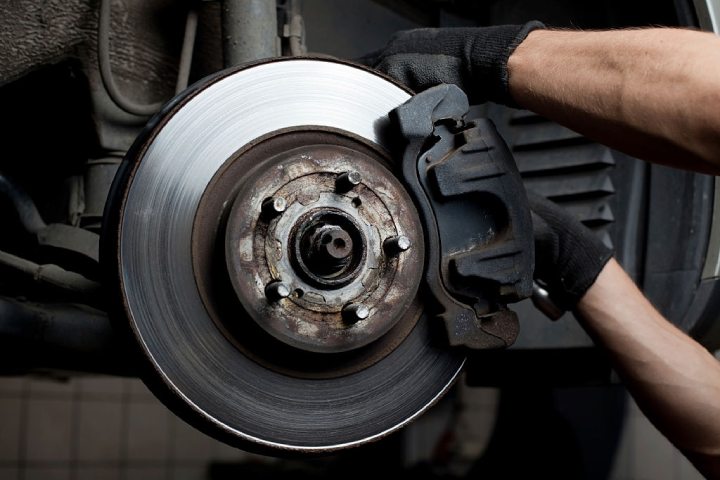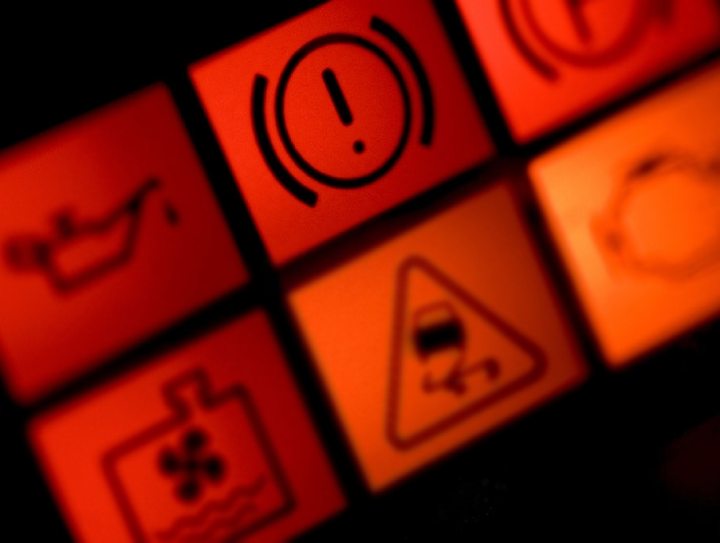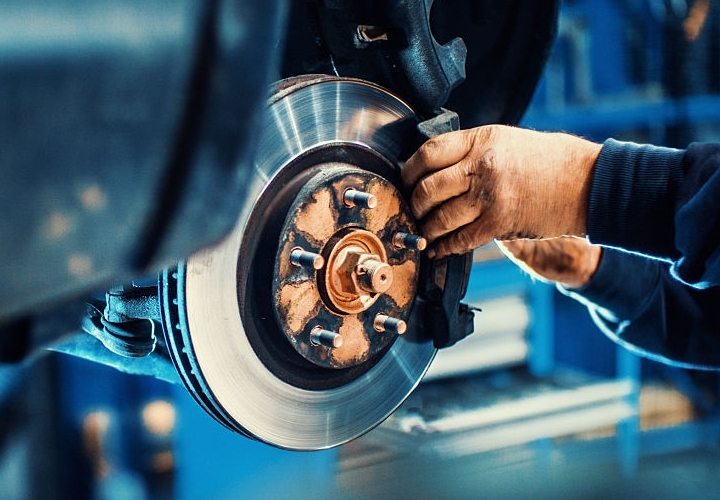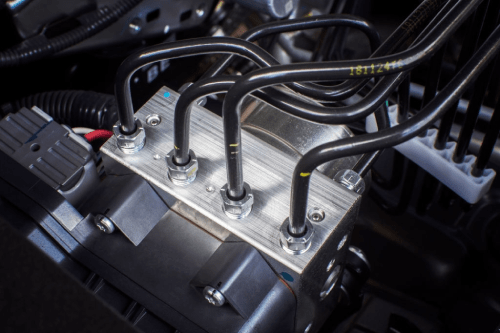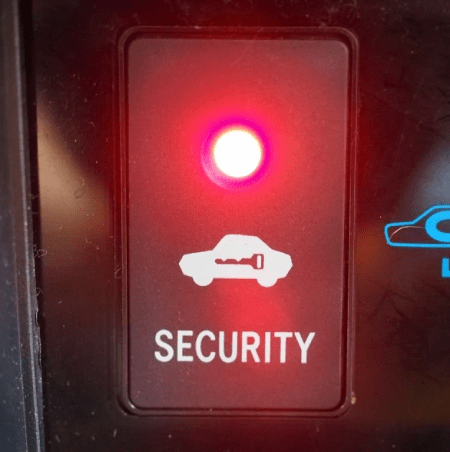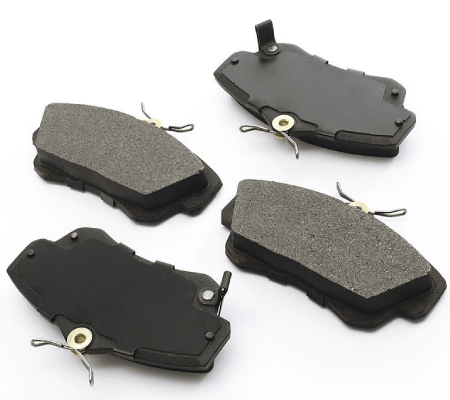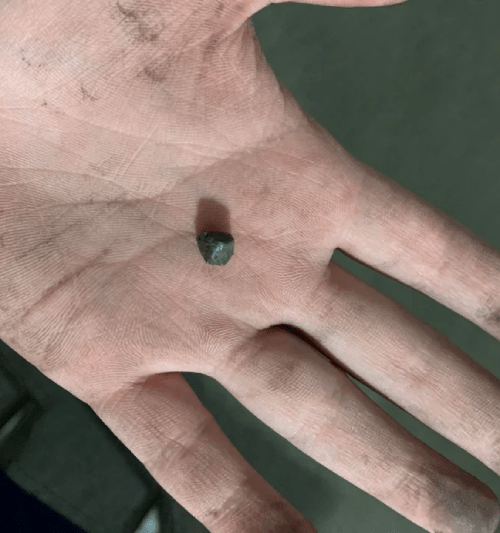When in proper working order, the brake pedal should be firm throughout its stroke. A firmer sensation should be experienced with increased pressure. We’ve all had to slam on the brakes suddenly to prevent a collision, and that’s when the pedal feels the most firmly attached to the floor. When you first put your foot on the brake pedal, the power brakes seem impossible to apply, but as soon as you start the car, they soften up a little. This is typical.
- Here's Why The Brake Pedal Is Stiff, and Car Won't Start
- What Is A Brake Switch, And What Does It Do?
- What Are the Main Causes of A Stiff Brake Pedal And Car Not Starting?
- What Are The Main Possible Causes For Your Car Not Starting?
- Here's a Rundown of Brake Pedal Sensations and What They Indicate
- Is It Safe to Drive If My Steering Wheel Shakes When Braking?
- How Much Will It Cost to Repair?
But what happens when your brake pedal is stiff, and the vehicle won’t start? Could the two symptoms be the result of the same technical problem with the vehicle?
Here’s Why The Brake Pedal Is Stiff, and Car Won’t Start
Having a stiff brake pedal when your car won’t start can be the result of a vacuum issue along the system, preventing you to fully depress the pedal in order to activate the brake switch. The culprit can be caused by a bad brake booster that leaks vacuum pressure, a failing vacuum pump, or sludge in the brake lines.
It is important to note that when depressing the brake pedal with the ignition off, it’s normal for the pedal to become stiff. It is also possible that you might be dealing with two issues, one causing the brake pedal to remain stiff, and another preventing the car from starting.
Assuming that indeed the culprit of your stiff pedal and car not starting is the same, here’s what you should know.
What Is A Brake Switch, And What Does It Do?
In an automatic car, the brake switch is a safety feature that is used to automatically engage the transmission when the brakes are applied. When the brake pedal is pressed, the brake switch sends a signal to the transmission control unit, which then shifts the transmission into the appropriate gear (such as park or neutral) to prevent the car from moving.
This helps to ensure that the car stays in place when the brakes are applied, and can prevent accidents by preventing the car from moving unexpectedly. The brake switch is typically located near the brake pedal, and is an essential part of the car’s braking system.
Now that you know what the brake switch does, let’s see what might prevent it from being activated when depressing the brake pedal.
What Are the Main Causes of A Stiff Brake Pedal And Car Not Starting?
As mentioned already, the problem lies somewhere along the vacuum system. There are multiple possible points of failure, where a vacuum issue could develop.
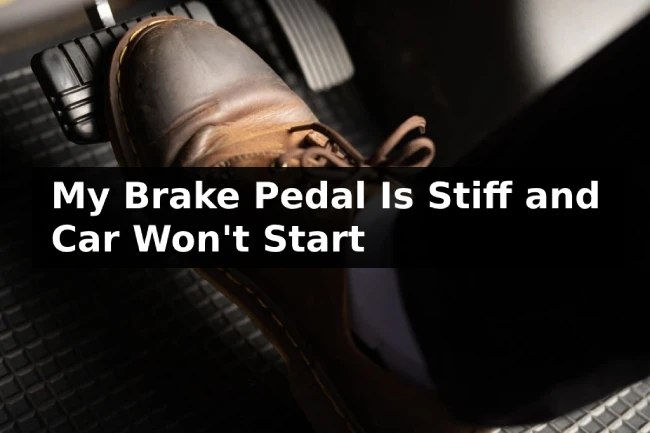
01. Bad Brake Booster
If the brake booster can’t keep up the vacuum pressure, it’s time to replace it. The vacuum created by the engine is what makes power brakes work. Through a vacuum hose connection, the engine’s intake manifold draws air into the brake booster’s front chamber as it draws air into the engine.
A valve controls this process. A diaphragm tear or a malfunctioning check valve are both possible issues. Both of these scenarios increase the likelihood that the brake booster may lose its ability to generate a vacuum and stop supplying energy to the master cylinder.
Fortunately, there is a simple way to determine whether or not your brake booster is to blame for your stiff pedal: Just pump the brakes a few times after turning off the automobile. It should become harder and harder to depress the pedal. Keep your foot on the brake as you start the automobile. In most cases, the brake booster is not at fault if you press down on the pedal before it becomes firm. If you cannot depress the pedal, you likely have a faulty brake booster.
02. Failing Vacuum Pump or Power-steering Pump
The brake boosters in several automobiles are designed differently. In some cars, the vacuum for the brake booster is not created by the engine intake manifold but rather by a mechanical or electrically driven pump. A hydraulic brake booster, found in some automobiles, eliminates the need for engine vacuum by employing the pressure created by the vehicle’s power steering pump to assist in braking.
If your car has a vacuum pump or hydraulic brake booster and you’re experiencing a tight brake pedal, it could be due to a lack of serpentine belt tension, a malfunctioning electric pump, or low power steering fluid.
03. Sludge In the Brake Lines
Sludge or debris can find its way in the brake lines, causing your brake pedal to become stiff. Because brake fluid is humectant, moisture in the air can find its way into the braking system. In the long run, sludge formed by water will restrict the flow of the braking fluid, making the pedal feel more rigid than usual. At the very least, every two years, you should replace your brake fluid to keep the pedal free of gunk and your brakes functioning properly.
04. Vacuum Leak On Master Cylinder Line
Starting the engine and letting it idle for at least 10 seconds is standard practice. Even without using the brakes, the engine will turn off. After 10 minutes, gently but firmly push the brake pedal while keeping an eye on the free play and reserve travel.
Maintaining that pressure, push the brake pedal down multiple times. Each additional force causes the power booster to vent some of its vacuum, making the brake pedal more responsive. If the brake pedal acts normal, there is no vacuum leak outside the vehicle. If the pedal starts acting strange, look for external vacuum leaks or power booster issues.
But what if you fix the pedal, but the car still won’t start? Let’s discuss some of the most common issues that might cause your vehicle to not start.
What Are The Main Possible Causes For Your Car Not Starting?
01. A Damaged Ignition Switch
A faulty ignition switch is a common problem in older vehicles. Slow engine cranking and erratic light behavior are symptoms of a faulty ignition switch. Put some pressure on the brakes and check the lights to see if the ignition switch is working. Are brake lights not working? That points to a problem with the ignition switch.
02. A Faulty Starter Cable
If your starter cable becomes unplugged from the battery terminal, you may notice that your brakes become more challenging to use. Turning the key may result in an audible clicking noise if the starter motor fails.
03. Faulty Starter Motor
The starting motor is probably to blame if you hear a clicking noise whenever you turn the key and the brake is on—a possible secondary symptom. Most cars have a history of hard starting until the starter finally “catches” and gets the engine going.
04. Dead Battery
The battery may be at the root of this problem. When the vehicle is switched off, the battery voltage should register about 12.5 volts to be considered healthy. If it is less than that, it may be able to run the radio and the door locks, but it won’t be enough to start the engine. A multi-meter may be used to check the battery’s voltage. Consider buying a new battery, charging the old one, or jumping it if the voltage is low.
Here’s a Rundown of Brake Pedal Sensations and What They Indicate
- The brake pedal sinks to the floor without producing any pressure from the master cylinder. This suggests a leak somewhere in the system.
- The Pedal is mushy and travels farther than usual; brake fluid leaks somewhere in the system;
- The Pedal is gritty; brake pads are worn to the metal and grinding on the rotors.
- The brake booster is malfunctioning. Thus the Pedal is very stiff, and the brakes do not apply.
Most vehicles have at least one brake warning light on the instrument panel. All dashboard indicators should come on when the automobile is first started. This is a test of the bulbs; in a few seconds, all of them should be out. The car is trying to tell you something is wrong if a warning light stays on. If a bulb fails the test, you’ll know it’s time to replace it.
One of two reasons can cause your car to flash its BRAKE light:
- Indicating that the parking brake is engaged.
- You have lost pressure in half of your braking system.
Is It Safe to Drive If My Steering Wheel Shakes When Braking?
The need for repair is imminent if the shaking in the steering wheel increases when you apply the brakes. As quickly as possible, but that depends on many things, including what’s triggering the tremors. If the issue results from loose rotors, you may be able to put off fixing it for a time, months or even years.
If loose lug nuts cause the issue, this is not the case. If that’s the case, you shouldn’t expect to make it past the first block. Warped rotors, as noted before, are a common cause of a trembling steering wheel.
It’s inconceivable to avoid dealing with this issue. Braking system components like callipers, bolts, brake pads, and ABS sensors are all susceptible to loosening and premature wear from constant vibration. The expense of what was previously a cheap fix will suddenly increase.
How Much Will It Cost to Repair?
There’s an extensive range for how much it’ll cost to fix the automobile because there are so many potential reasons why it won’t start, or the brake pedal is firm. Repairing a blown fuse could cost as little as a few bucks.
A replacement battery, should one be required, may cost anywhere from $100 to $200. Brake light switches, neutral safety switches, ignition switches, starters, and brake boosters are all best serviced by a professional auto mechanic.
Fuse replacement is an inexpensive repair. The starting repair is your first concern, so give that your full attention. Verify that your amp rating is adequate. Everything you need to know about maintaining your vehicle will be listed in the manufacturer’s manual. The amp rating is often greater than 125 amps. The fuse may be between the box of fuses and the starter rather than in the box itself.
Installing a brake vacuum booster is a costly maintenance item. The cost of the component itself should range from $150 to $300, with an additional $200 needed to cover labor. The total price ranges from $350 to $500.
The replacement cost for a defective starting motor is often between $60 and $150. The price of labor often runs between $100 and $175. Generally, you can count on spending between $160 and $325 altogether.
The price of a new switch to turn the engine on might range widely. Some manufacturers incorporate their switches within the lock assembly, while others use separate units that can be swapped out for much less money and effort.
On the low end, you may expect to pay between $50 and $100 for the part plus another $75 to $100 for the work. The price of the lock component ranges from $75 to $125 for higher-priced assemblies. However, wage expenses won’t rise by much.
Changing out a defective neutral safety switch will set you back around $140. There will be a $40 fee for the parts and $60-$100 for the labor.
References
Can’t Pump the Brakes? 4 Causes of Stiff Brake Pedals
How should your brakes feel under foot?
Checking vacuum leaks from the power booster
Every since I was a little boy, I can remember spending the afternoons in my dad’s repair shop. I got my first car at 16 and it was the best feeling ever!
I have contributed to various automotive publications but decided it’s finally time to settle for something constant.

